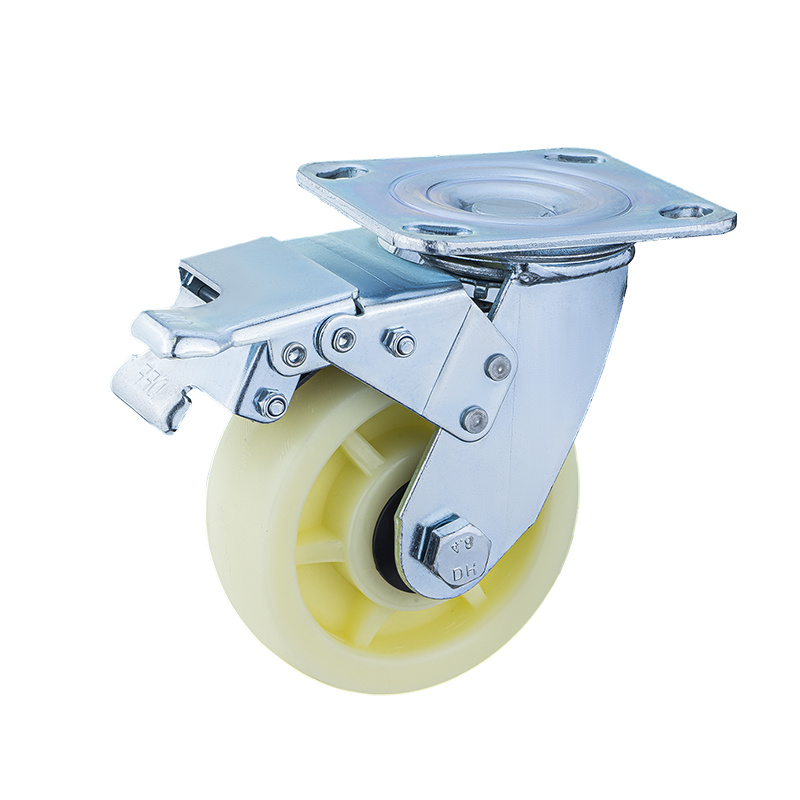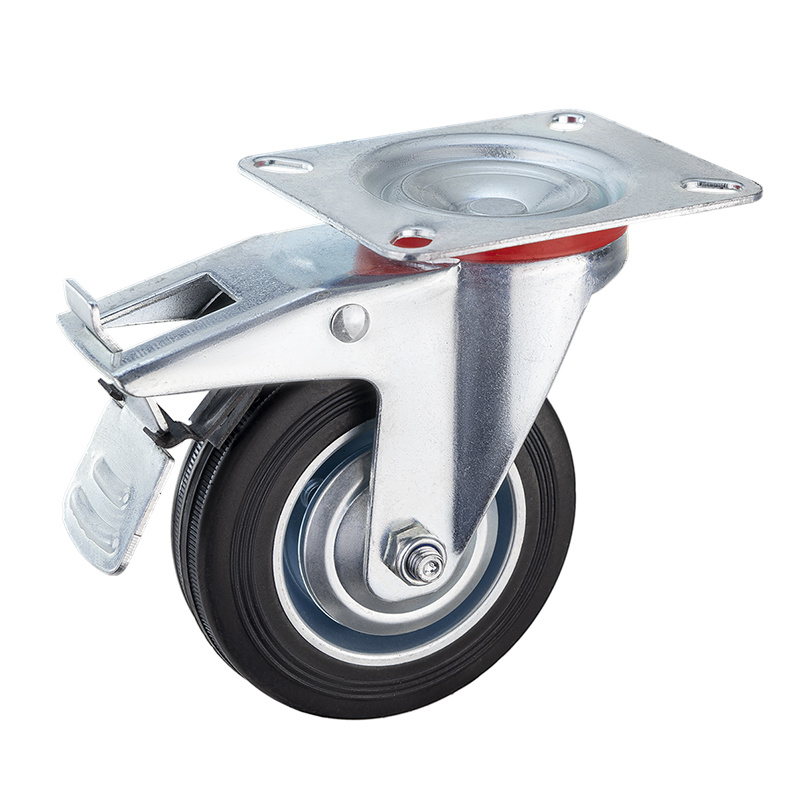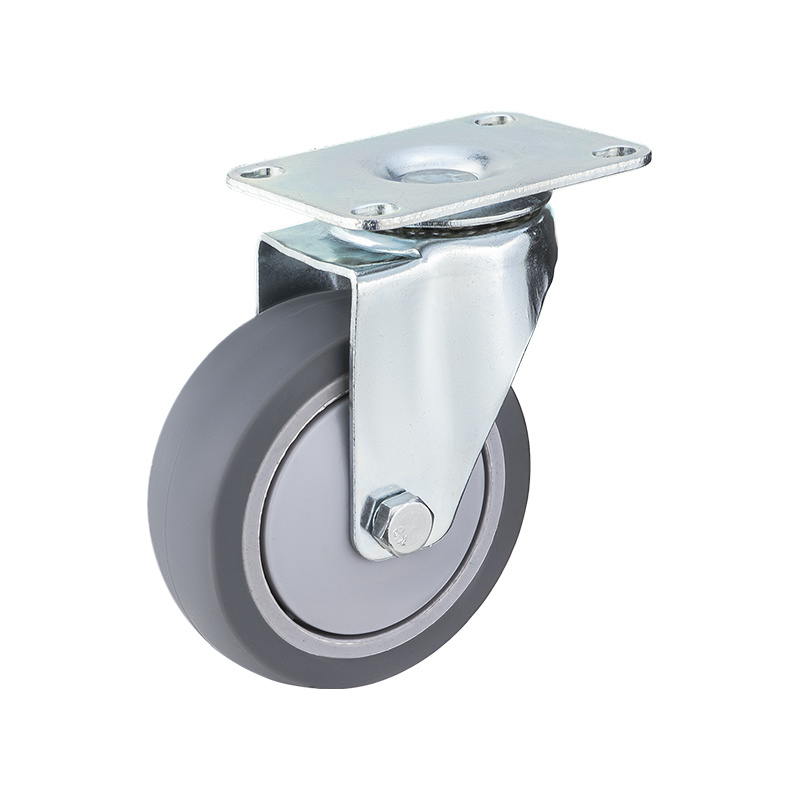BLOG
Heavy Duty Caster Trends: What's New in the Market?
2025-05-24
Heavy Duty Caster Trends: What's New in the Market?
Introduction to Heavy Duty Casters
Heavy-duty casters are essential components in various industries, providing mobility and stability for equipment, furniture, and materials. With advancements in technology and design, the heavy-duty caster market is continually evolving. In this article, we will explore the latest trends in heavy-duty casters,
Heavy Duty Caster Trends: What's New in the Market?
Introduction to Heavy Duty Casters
Heavy-duty casters are essential components in various industries, providing mobility and stability for equipment, furniture, and materials. With advancements in technology and design, the heavy-duty caster market is continually evolving. In this article, we will explore the latest trends in heavy-duty casters, focusing on innovations that enhance performance, safety, and sustainability.
Understanding Heavy Duty Casters
Before delving into the trends, it’s crucial to understand what heavy-duty casters are. These casters are designed to support substantial weight, typically ranging from 1,500 to 5,000 pounds. They are commonly used in warehouses, factories, hospitals, and various industrial settings. Their robust design ensures durability while maintaining smooth mobility.
Key Features of Heavy Duty Casters
- **Load Capacity**: The primary characteristic that distinguishes heavy-duty casters from standard casters.
- **Material Composition**: Made from robust materials like steel, polyurethane, and rubber, which ensure longevity and performance.
- **Wheel Type**: Includes rigid and swivel casters, allowing for different movement patterns based on the application.
- **Braking Mechanisms**: Integrated brakes enhance safety by preventing unwanted movement when stationary.
Emerging Trends in Heavy Duty Casters
As industries evolve, so do the needs for enhanced mobility solutions. Here are some of the most notable trends shaping the heavy-duty caster market today.
1. Innovative Materials
The use of advanced materials is a significant trend in heavy-duty casters. Manufacturers are increasingly utilizing materials like **thermoplastic elastomers (TPE)** and **high-performance plastics** to create lighter yet stronger casters. These materials offer resistance to chemicals, UV rays, and abrasion, enhancing the caster's lifespan and functionality.
Benefits of Advanced Materials
- **Increased Durability**: New materials withstand harsh environments better than traditional options.
- **Weight Reduction**: Lighter casters reduce the overall weight of equipment, improving maneuverability.
- **Cost-Effectiveness**: Greater durability leads to lower replacement and maintenance costs over time.
2. Ergonomic Designs
As workplaces focus more on employee health and safety, ergonomic design in heavy-duty casters is becoming a priority. These designs aim to reduce strain and injury, making it easier for workers to transport heavy items. Features like **soft-touch grips** and **easy-to-operate brakes** are gaining popularity.
Significance of Ergonomics in Casters
- **Reduced Physical Strain**: Ergonomically designed casters minimize the risk of workplace injuries.
- **Improved Productivity**: Easier handling of heavy loads allows employees to work more efficiently.
- **Enhanced Safety**: Better control and stability reduce the likelihood of accidents during transport.
3. Sustainable Solutions
Sustainability is a growing concern across all industries, and the heavy-duty caster market is no exception. Manufacturers are increasingly focusing on eco-friendly materials and production processes. The use of recycled materials and energy-efficient manufacturing methods is on the rise.
Impact of Sustainable Practices
- **Environmental Responsibility**: Companies can reduce their carbon footprint by opting for sustainable casters.
- **Regulatory Compliance**: Increasing regulations around sustainability require businesses to adapt to eco-friendly solutions.
- **Market Appeal**: Consumers are more inclined to support brands that prioritize sustainability.
Technological Advancements in Heavy Duty Casters
In addition to material and design trends, technology plays a pivotal role in the evolution of heavy-duty casters.
1. Smart Casters
The integration of technology into heavy-duty casters has led to the development of **smart casters**. These innovative solutions feature sensors and connectivity options that provide real-time data on weight, movement, and condition. This technology enhances monitoring and maintenance, helping businesses optimize their operations.
Advantages of Smart Casters
- **Predictive Maintenance**: Sensors can alert users to potential issues before they become critical, reducing downtime.
- **Enhanced Tracking**: Real-time data provides insights into usage patterns, helping in inventory management.
- **Increased Efficiency**: Automating data collection allows for better decision-making and resource allocation.
2. Customization Options
Another trend is the rise of customizable heavy-duty casters. Businesses are increasingly looking for solutions tailored to their specific needs, leading manufacturers to offer options for customization in size, material, and design.
Why Customization Matters
- **Tailored Solutions**: Custom casters can meet unique operational requirements, enhancing performance.
- **Branding Opportunities**: Customized designs allow companies to incorporate branding, making their equipment more recognizable.
- **Flexibility**: Customization ensures that businesses can adapt to changing needs over time.
Applications of Heavy Duty Casters
The diverse applications of heavy-duty casters underscore their importance in various sectors.
1. Industrial Settings
In manufacturing and warehousing, heavy-duty casters are indispensable for moving heavy machinery, pallets, and equipment. Their robust design ensures safety and reliability in high-demand environments.
2. Healthcare Facilities
Hospitals and healthcare facilities utilize heavy-duty casters for transporting medical equipment, trolleys, and beds. The ergonomic and safety features of these casters are crucial in maintaining a safe environment for patients and staff.
3. Retail and Commercial Use
Retailers use heavy-duty casters for display units and shopping carts. The mobility these casters provide enhances customer experience by enabling easy movement of products and displays.
Choosing the Right Heavy Duty Caster
Selecting the appropriate heavy-duty caster involves understanding specific requirements and applications. Here are several factors to consider:
1. Load Capacity
Assess the weight of the items to be transported to determine the necessary load capacity of the caster. Ensure that the selected casters can handle the weight safely.
2. Wheel Material
Choose wheel materials based on the surfaces they will traverse. Hard wheels are suitable for smooth surfaces, while softer wheels are ideal for uneven terrain to absorb shock and reduce noise.
3. Brake Options
Consider whether the application requires locking mechanisms. Options such as total-lock brakes provide greater safety by securing the caster in position.
4. Size and Height
The size and height of the caster should match the equipment it will be used with. Proper sizing ensures stability and effective operation.
FAQs About Heavy Duty Casters
1. What are heavy-duty casters made of?
Heavy-duty casters are typically made from materials like steel, polyurethane, rubber, and advanced plastics designed to withstand high weights and harsh conditions.
2. How do I know the right load capacity for my casters?
Determine the weight of the items being moved and consider the total load when calculating the required caster capacity. It is advisable to choose casters with a higher load rating than the actual weight.
3. Can heavy-duty casters be used outdoors?
Yes, many heavy-duty casters are designed for outdoor use, but it’s important to select materials that can withstand environmental factors like moisture and UV exposure.
4. What maintenance do heavy-duty casters require?
Regular inspections for wear and tear, cleaning wheels and bearings, and lubrication are essential for maintaining the performance and longevity of heavy-duty casters.
5. Are there smart heavy-duty casters available on the market?
Yes, smart heavy-duty casters with integrated sensors and connectivity options are available, providing real-time data and enhancing operational efficiency.
Conclusion
The heavy-duty caster market is evolving rapidly, driven by innovations in materials, design, and technology. From ergonomic designs that prioritize user comfort to sustainable practices that meet environmental standards, the trends we’ve explored reflect a commitment to improving functionality and safety. As industries continue to adapt to changing needs, staying informed about these trends will enable businesses to make the best choices for their operations. By investing in the latest heavy-duty casters, companies can enhance efficiency, productivity, and overall workplace safety.
Key words:
RELATED NEWS
Heavy Duty Caster Trends: What's New in the Market?
2025-05-24
Heavy Duty Caster Trends: What's New in the Market?
Introduction to Heavy Duty Casters
Heavy-duty casters are essential components in various industries, providing mobility and stability for equipment, furniture, and materials. With advancements in technology and design, the heavy-duty caster market is continually evolving. In this article, we will explore the latest trends in heavy-duty casters,
Mastering the Essentials of Industrial Casters for Optimal Performance
2025-05-17
Industrial casters are vital components in various industries, especially in the realm of hardware tools and accessories. Understanding these components can significantly impact your operations, whether you're involved in manufacturing, warehousing, or logistics. This article delves into the essential features, types, and maintenance tips related to industrial casters, aiming to equip you with pra
Understanding Load Ratings: How to Choose Your Medium Duty Caster for Optimal Performance
2025-05-10
Understanding Load Ratings: How to Choose Your Medium Duty Caster for Optimal Performance
Table of Contents
Introduction to Medium Duty Casters
Understanding Load Ratings for Casters
Factors Affecting Load Capacity
Materials and Design Considerations
How to Choose the Right Medium Duty Caster
Applications for Medium Duty Casters
Maintenance and Care for Longevity
F








